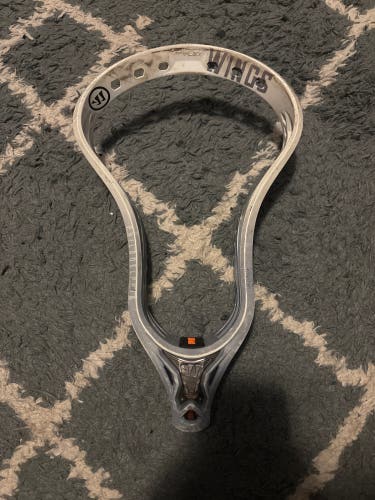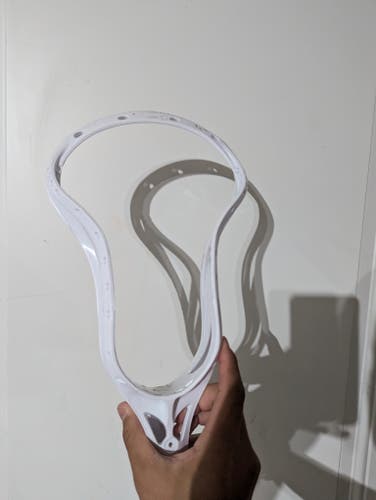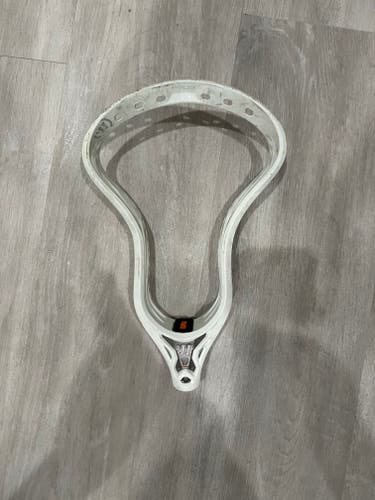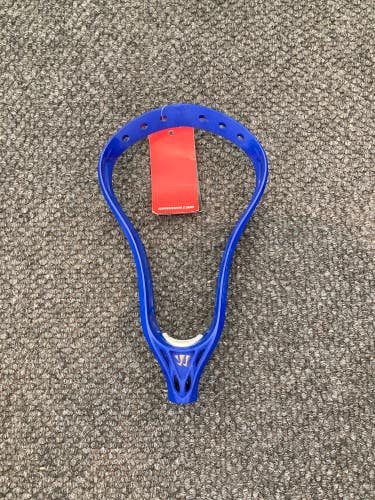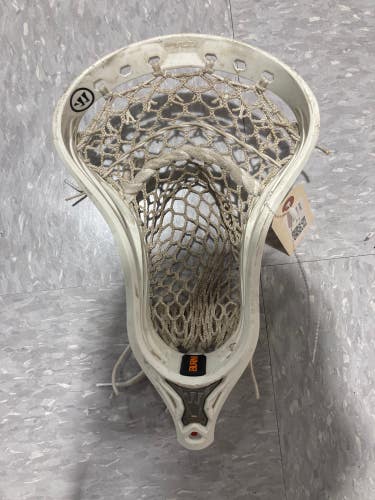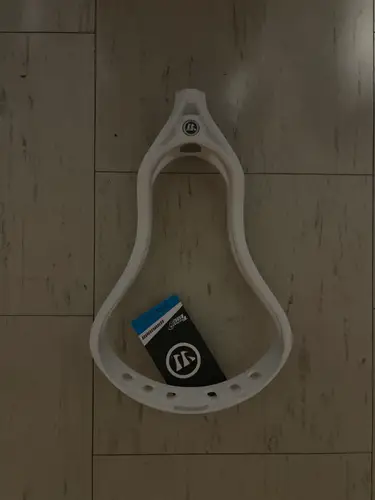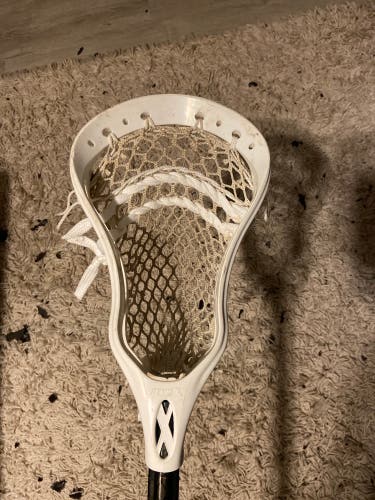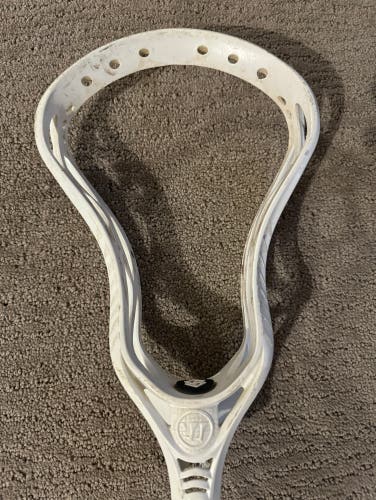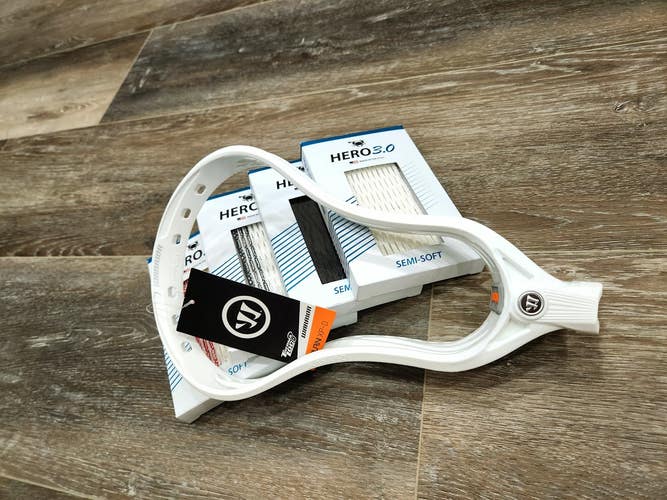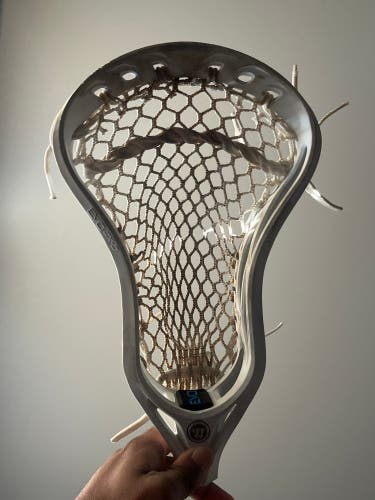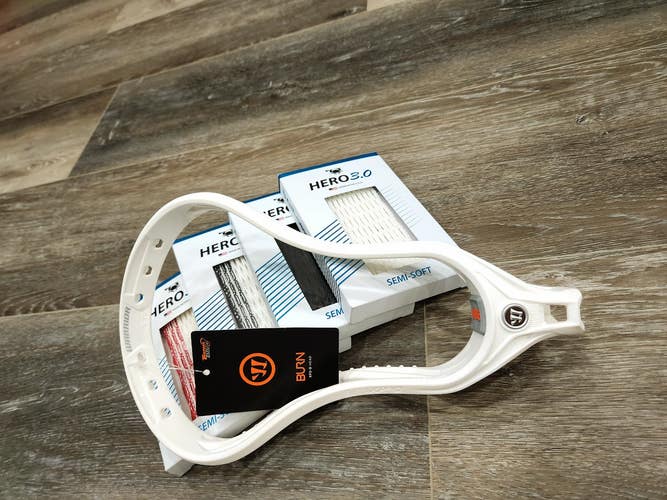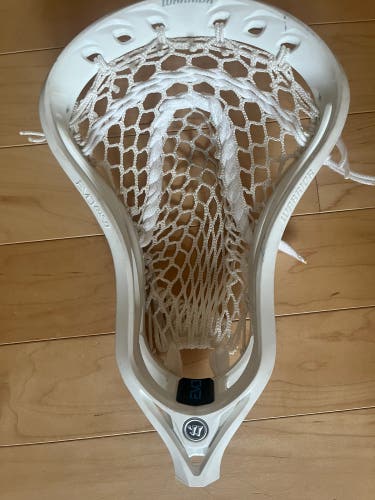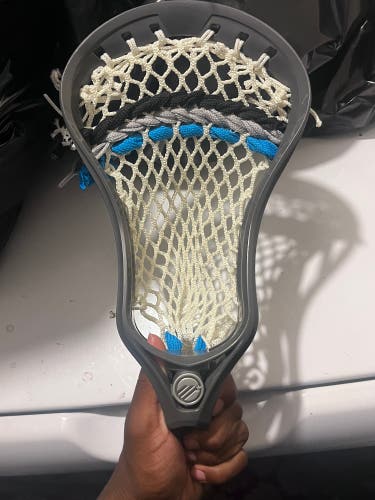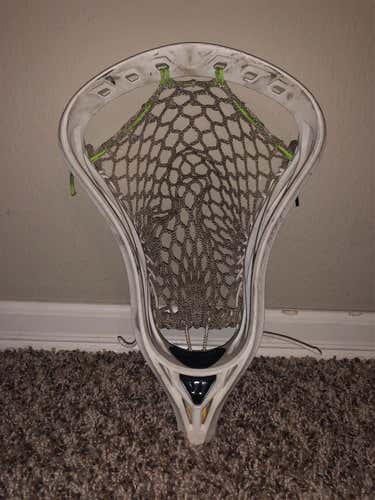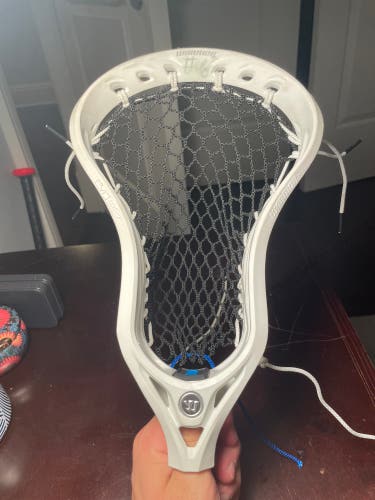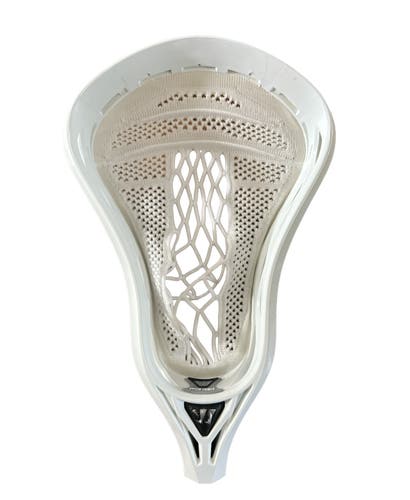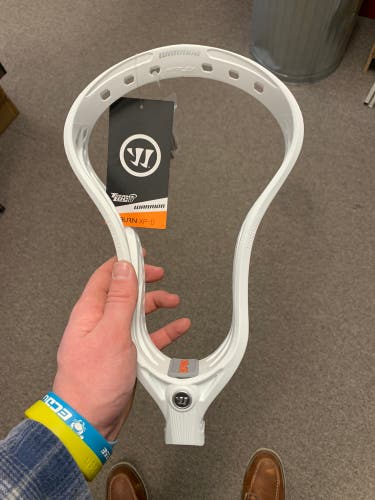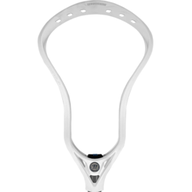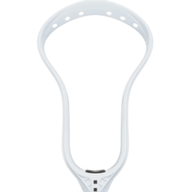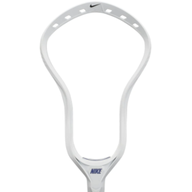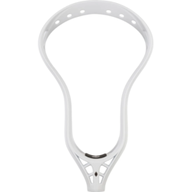Typically, all modern lacrosse heads are made of plastic.
From top to bottom, there are several parts of a lacrosse head:
- Scoop: the top of the head where the ball will enter the head when scooped off the ground.
- Face: the front of the head. The face shape will vary depending on make and model.
- Sidewall: the side of the head, typically open and supported with struts. The design of the struts is a good indicator of make and model.
- Pocket: a mesh or leather stringing that holds the ball inside the head.
- Throat: the bottom of the head, where the plastic meets the shaft. The shape and cut of the plastic is indicative of the make and model.
Universal lacrosse rules mandate that heads measure no less than 6.5 inches at the wide part of the scoop and no less than 3 inches at the narrow channel near the throat. Heads may only measure 10 inches from the ball stop to the tip of the scoop.
